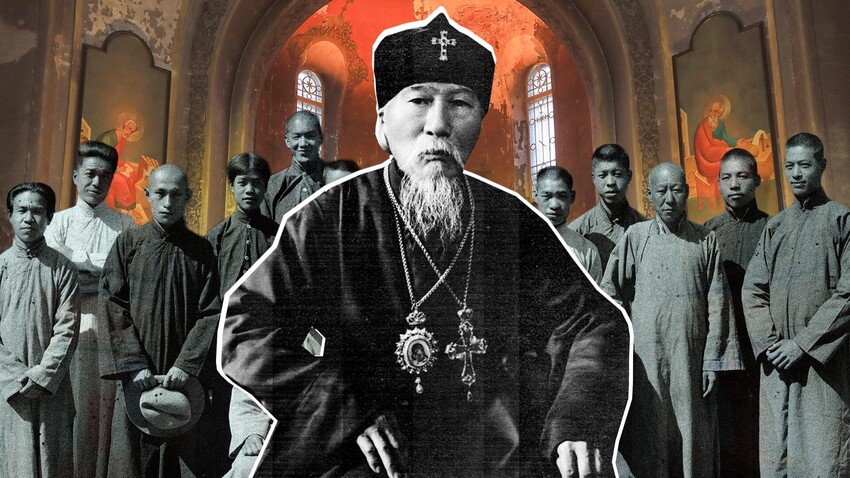
In 1966, at the beginning of the so-called ‘Cultural Revolution’ in China, Father Grigoriy Zhu (1925-2000) and his wife were arrested by the Red Guards (members of the Chinese student revolutionary brigades). They were tortured and forced to renounce the Russian Orthodox faith. Father Gregory’s wife developed mental illness after the torturing. Father Gregory was sent to the quarries, where he spent 12 years, until 1978. Work at the quarries irreversibly undermined Father Gregory’s health, but, after his release, he returned to service – in 1983, Father Gregory again became rector of the Church of the Shroud of the Blessed Virgin in Harbin, where he served until the “cultural revolution”.
The Chinese Orthodox Church is a part of the Moscow Patriarchate. St Nicholas’ Church at Golutvin is its Metochion in Moscow. Despite the fact that the Chinese Orthodox Church is currently not officially registered with the government in China, it has a rich and often heroic past and will probably soon be restored.
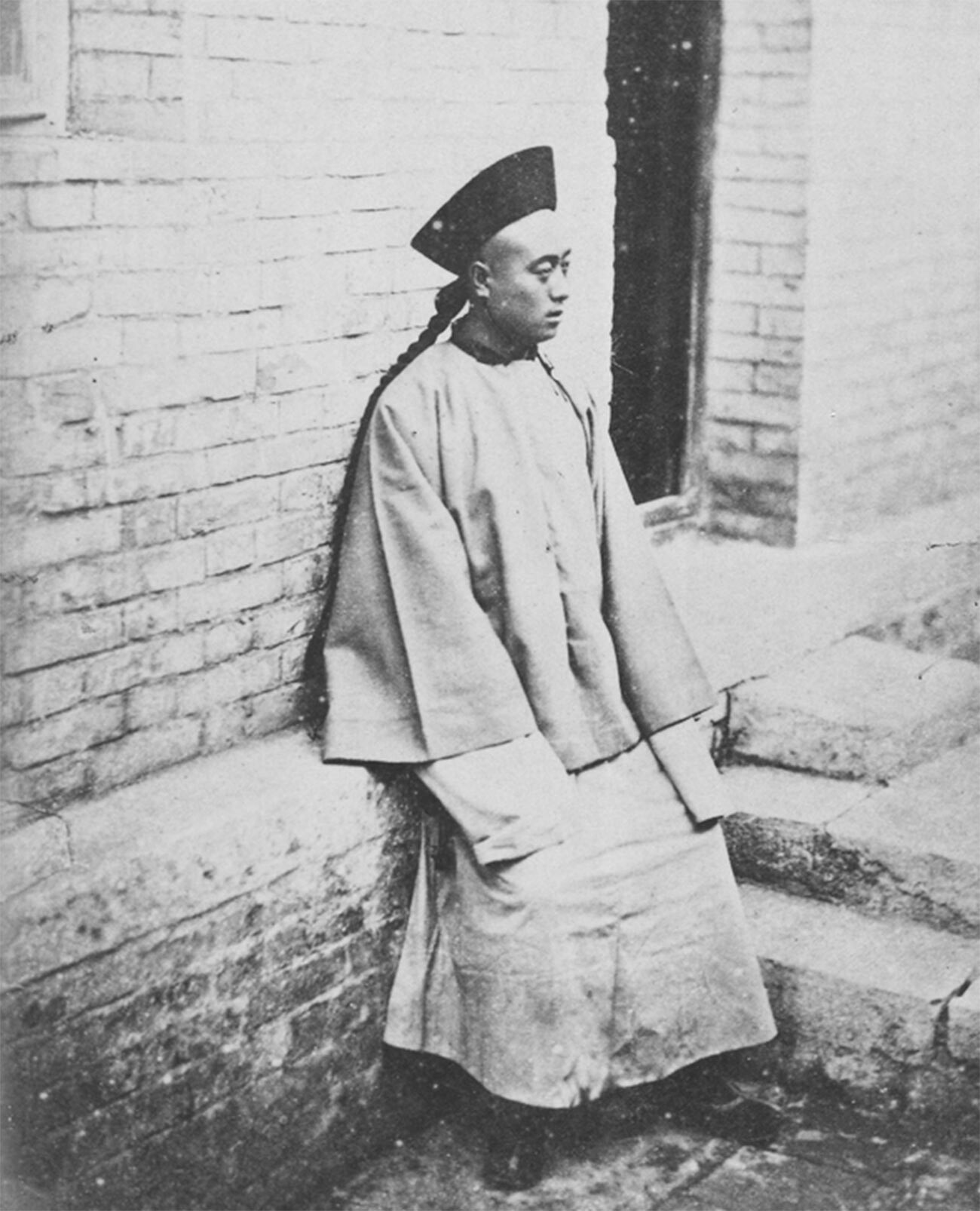
An Albazinian young man, 1874.
Public domainThe history of Orthodoxy in China is a history of struggle and hardship. It even began with a military conflict. In 1685, the Russian fortress Albazin on the Amur River was besieged by the Quing army, outnumbering the defenders. Part of the garrison managed to escape, but about 100 Cossacks and their families (Russians, Buryats and Kalmyks) were taken as prisoners to Beijing. The Chinese Emperor Xuanye, who ruled under the motto ‘Kangxi’ (“Prosperous and Radiant”), decided not to execute or capture the Russians, but rather enlisted them in the Chinese army, forming a “Russian company”. The Russians received a very good salary, cash gifts, lands and houses for permanent use. Father Maxim (Leontyev), the first Russian Orthodox priest in China, went with the Cossacks into captivity. The Albazinians, as they called themselves, were given the use of a former Buddhist temple, which they turned into an Orthodox church.
When, in 1689, the Treaty of Nerchinsk (the first diplomatic treaty on trade and borders between the two states) was signed between the Moscow tsardom and China, the political importance of the Albazinians began to decline. Since most of the first Albazinians were Cossacks, they soon mixed with the Manchu population and, by the middle of the 18th century, almost lost their Russian features. Nevertheless, Russia used this small grouping as a confirmation that a Russian Orthodox Ecclesiastical Mission should exist in China. The Mission was opened in 1716, when Archimandrite Hilarion (Lezhaysky) arrived in Beijing and brought icons, church utensils and liturgical books. Members of the Ecclesiastical Mission were enlisted in the Imperial service, just as Albazinians were enlisted in the Quing army.
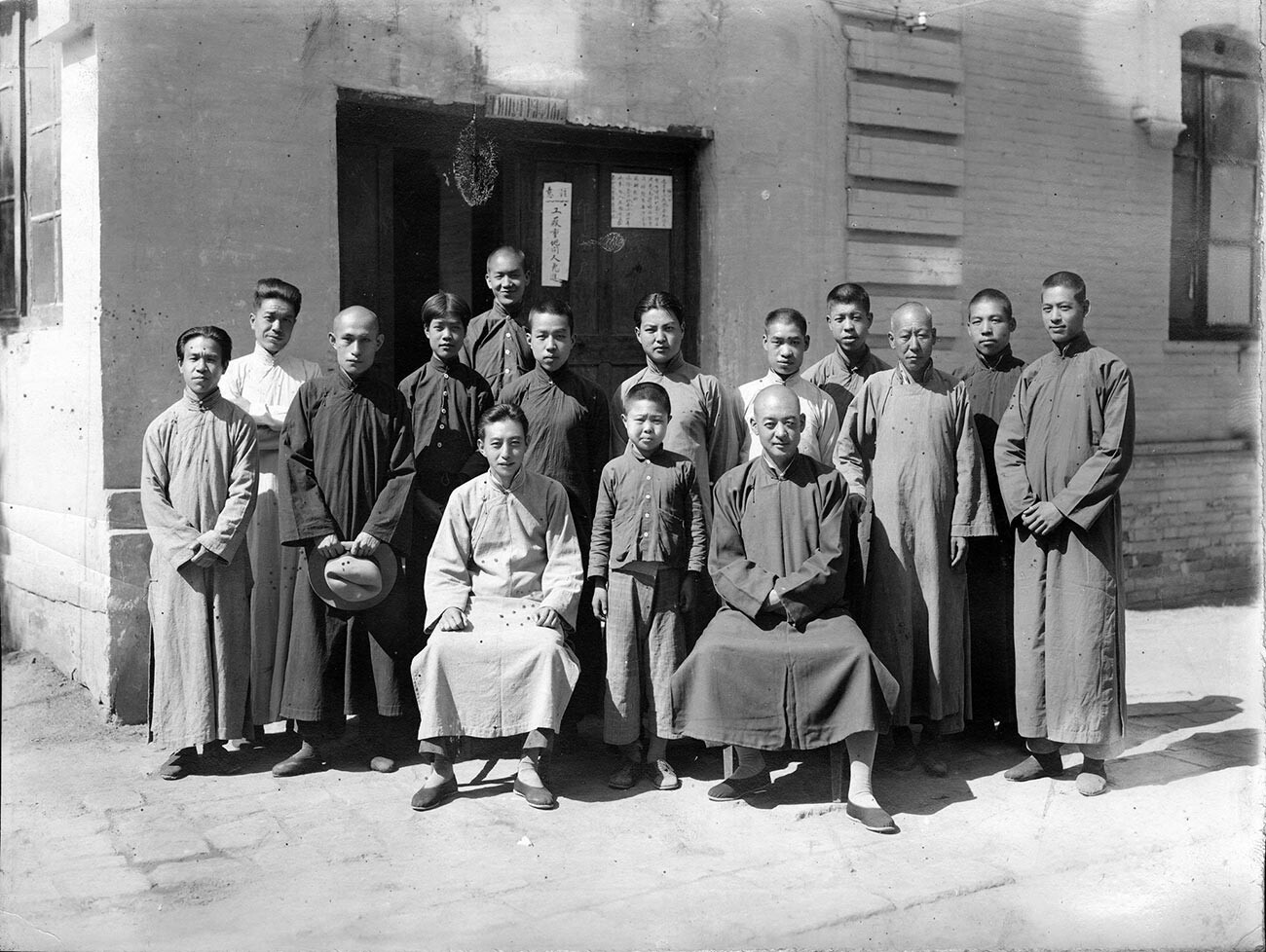
Chinese Russian Orthodox believers – workers of a printing house of the Russian Othodox Ecclesiastical Mission in Beijing.
Public domainRussian missionaries, however, didn’t preach Orthodoxy among the Chinese, only providing pastoral care for those Orthodox people present in the small community. This tactic enabled the Russian Orthodox people of China to avoid the repressions of Christians that the Chinese government occasionally undertook. Until 1861, when the first Russian diplomatic mission was opened in China, the Beijing Russian Orthodox Ecclesiastical Mission was Russia’s only source of information about China.
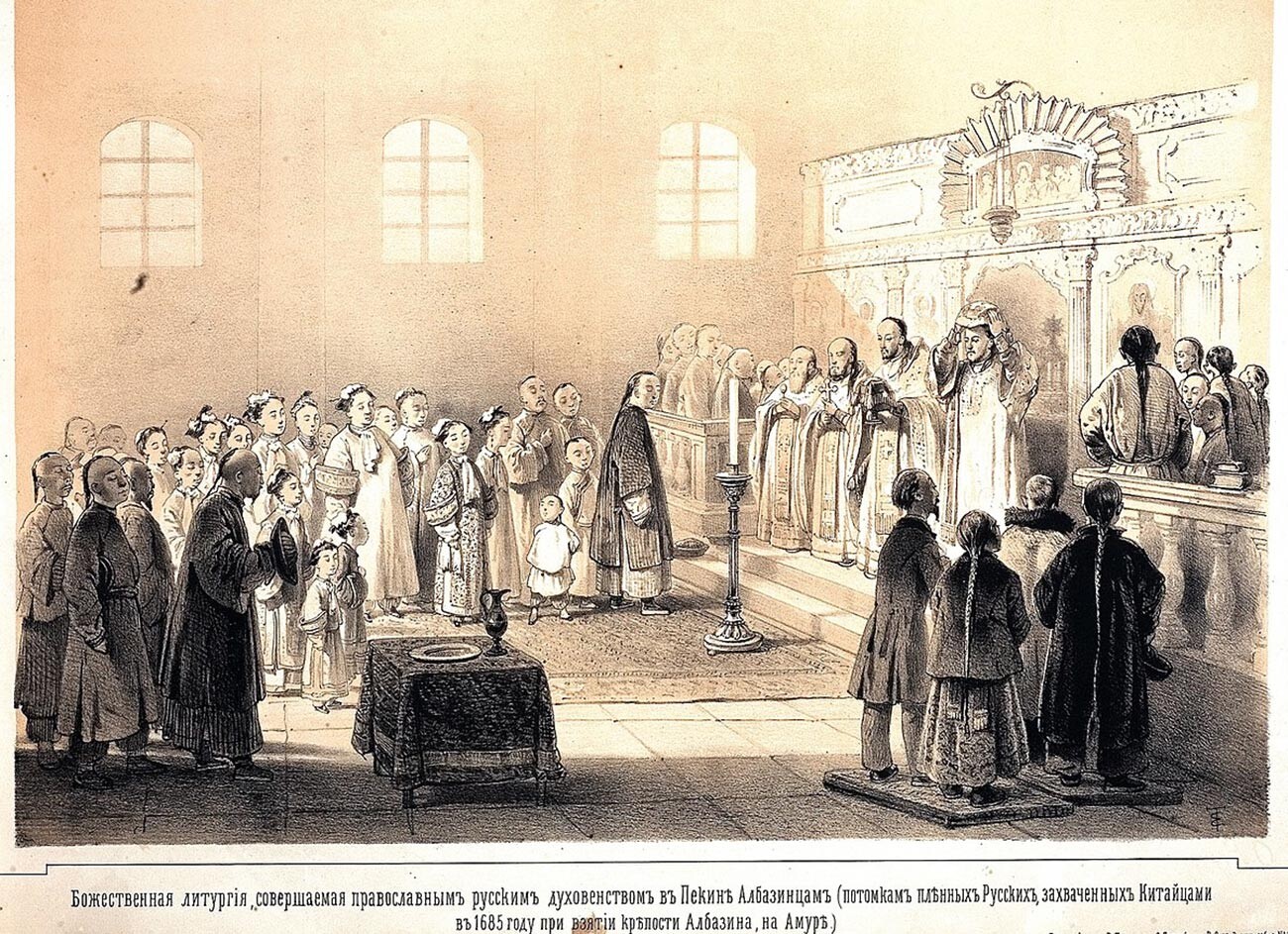
A service held for Albazinians in the Russian Othodox Ecclesiastical Mission in Beijing.
Public domainAlready in the middle of the 18th century, the Albazinians, who by tradition continued to be in a privileged position, turned into a semi-decayed elite in China. Among their population, which from the beginning was not entirely ethnically Russian, as a result of assimilation, almost nothing remained of the Russian traits. In their homes, they traditionally kept crosses and icons left from their ancestors, but judging by their lifestyle, the Christian virtues were alien to Albazinians.
As an Orthodox priest of Beijing wrote, the Albazinians “considered any occupation unworthy of them, creating their own special type of Beijing residents as hereditary members of the imperial guard. Arrogant in their behavior, proud of their privileged position, not knowing what to do with their free time, they roamed the streets, visiting tea houses and hotels, restaurants and theaters and began to indulge in smoking opium. Gradually they began to degenerate spiritually and physically, falling into debt and into the hands of moneylenders”. In Beijing society, Albazinians had an extremely negative reputation as drunks, knaves and swindlers. In 1831, only 94 people counted themselves as Albazinians, but there must have been more of them – because of bad reputation, many people didn’t want to reveal their Albazinian roots.
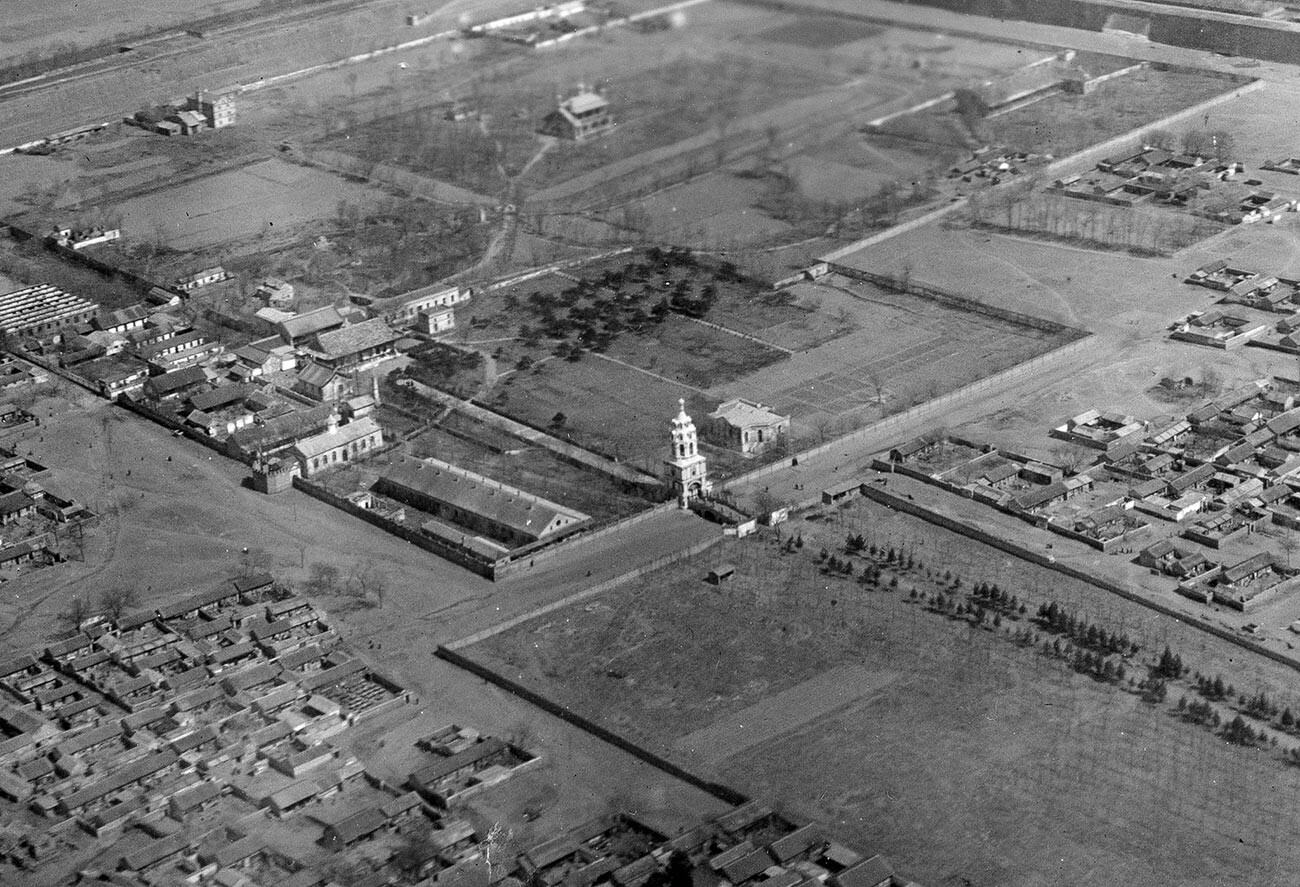
The buildings of the Russian Othodox Ecclesiastical Mission in Beijing (aerial view).
Public domainIn 1895, China lost the war to Japan, which Russia took advantage of: capturing Manchuria, the Russians began to build the Chinese Eastern Provinces Railway there. More and more Russians began to arrive in the Chinese lands, while the railroad construction itself threatened to leave tens of thousands of Chinese unemployed – boatmen, carriers, porters, cattle herders, to name just a few. Combined with the drought that hit the northern provinces and the influx of foreign goods to the Chinese market, this led to mass popular protests known as the ‘Boxer Rebellion’ (1899-1901).
During the uprising, many Orthodox Christians were killed – they later became known as ‘Chinese New Martyrs’ – and the Russian Orthodox Ecclesiastical Mission was looted and destroyed. However, Russians quickly restored the activities and the buildings of the Mission with rich financial aid from the Russian Holy Synod, while the head of the mission, Archimandrite Innokenty (Figurovsky) (1863-1931), was ordained a bishop. In 1900, the Church of the Annunciation of the Blessed Virgin Mary was erected in Harbin. By 1916, there were more than 5,000 Russian Orthodox believers, two monasteries, 19 churches, as well as men’s and women’s Orthodox schools, in China.
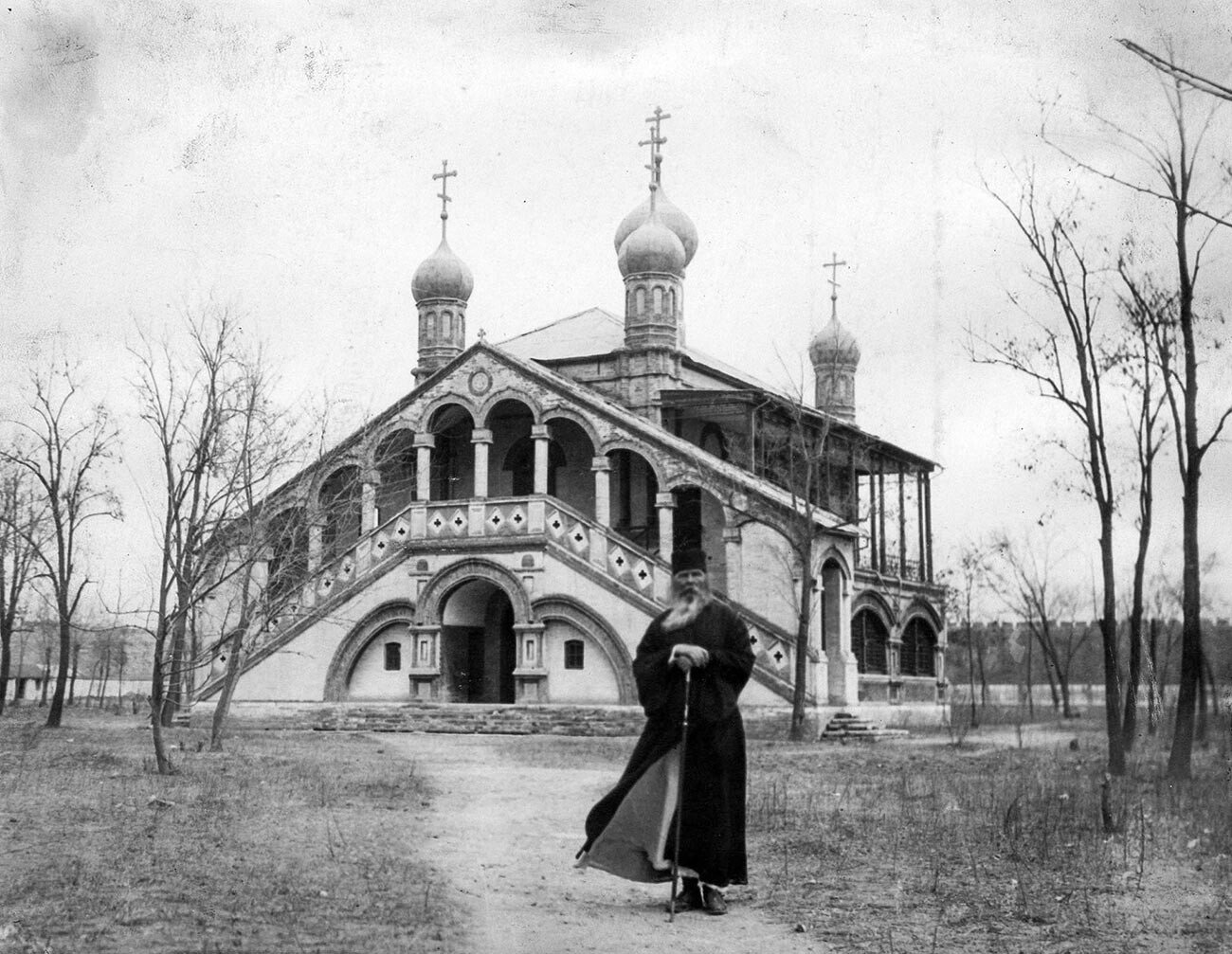
Father Innokentiy (Figurovsky) standing at the Church of All Holy Martyrs (destroyed during the "cultural revolution"), where the Martyrs of Alapaevsk were interred.
Public domainAfter the revolution of 1917, thousands of Russian refugees, mainly supporters of the tsarist regime, streamed into China via the Russian Far East, fleeing from the Bolshevik forces. In 1920, the remains of the Martyrs of Alapaevsk, members of the House of Romanoff and people close to them, murdered on the night of July 18, 1918, the day after the execution of the royal family, were brought to Beijing. Bishop Innokenty (Figurovsky) met the procession with the bodies in Beijing and took care of their burial in the cemetery of the Russian Ecclesiastical Mission.
From 1919 on, the main function of the Russian Ecclesiatical Mission was to assist the Russian refugees. Father Innokenty, who was elevated to the rank of archbishop in 1921, threw all his energies and resources into helping these people, loaning them a large part of the Mission’s property for long-term use. Unfortunately, the property was largely plundered. “Archbishop Innocent’s incessant litigation with many Russian residents in Beijing, Shanghai and other cities in China, especially over the past eight years, has brought the Russian Spiritual Mission in Beijing to total ruin and poverty,” Archpriest Alexander (Pinyaev) wrote in 1928.
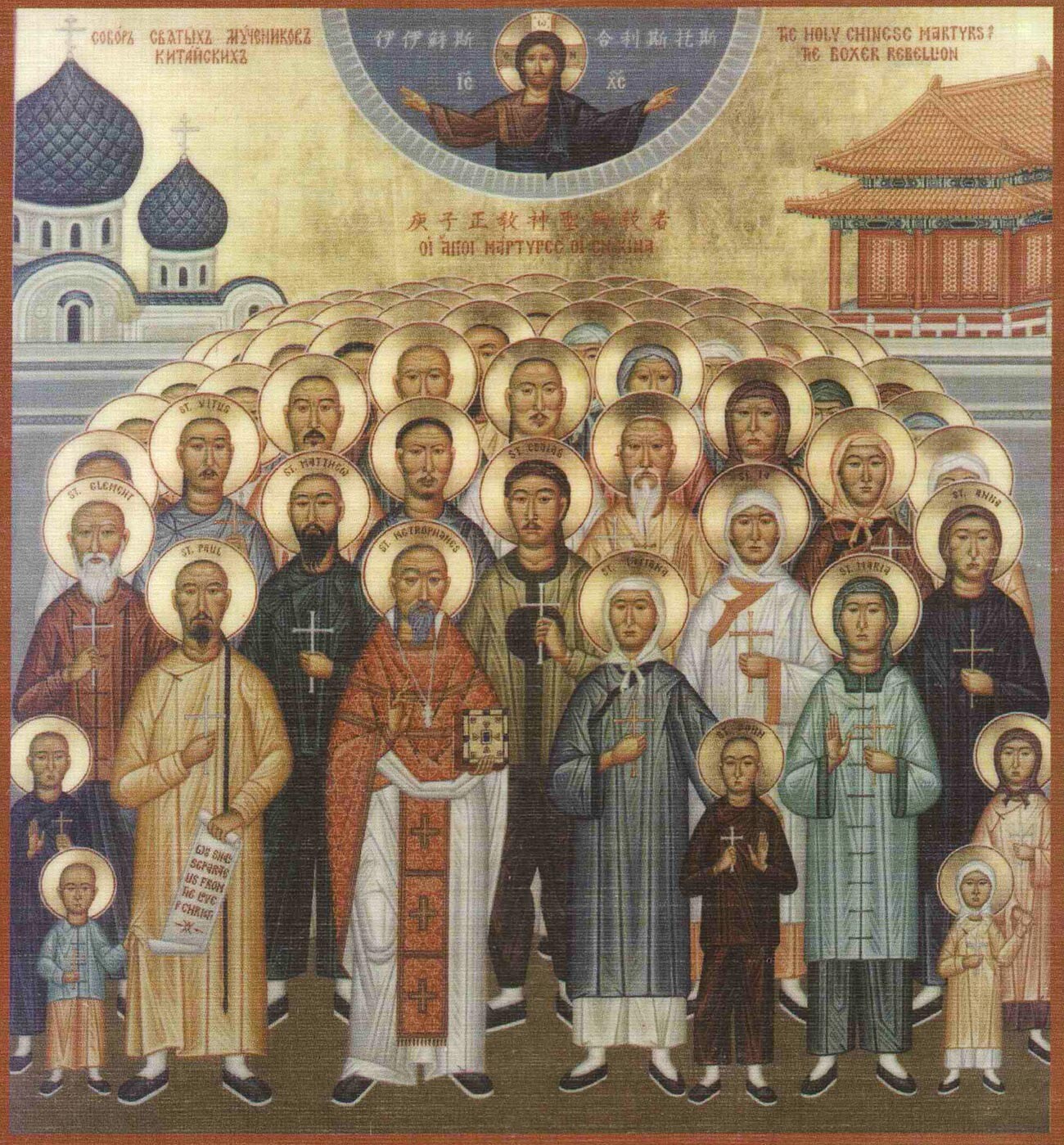
The Chinese Martyrs, icon.
Public domainHowever, many Russians living in China during the interwar period made great efforts to upkeep their Orthodox faith. By 1949, 106 Orthodox churches had been built in China and, according to some estimates, up to one million Orthodox Christians were living in China at the time. After World War II, the Communist government came to power in China and began persecuting the Orthodox Faith.
In 1954, the Russian Orthodox Ecclesiastical Mission was closed. Its property was partially nationalized by China and partially transferred to the Soviet Embassy. The Church of All Saints Martyrs, which housed the relics of the Chinese martyrs and the bodies of members of the imperial family shot at Alapaevsk, was destroyed, as were many other churches. In 1956, the Holy Synod of the Russian Orthodox Church granted autonomy to the Chinese Orthodox Church. Archimandrite Basil (Shuang) (1888-1962) was ordained bishop of Beijing. However, with his death, the Chinese Orthodox Church lost its bishop hierarchy and, perhaps, the most terrible period in its history began.
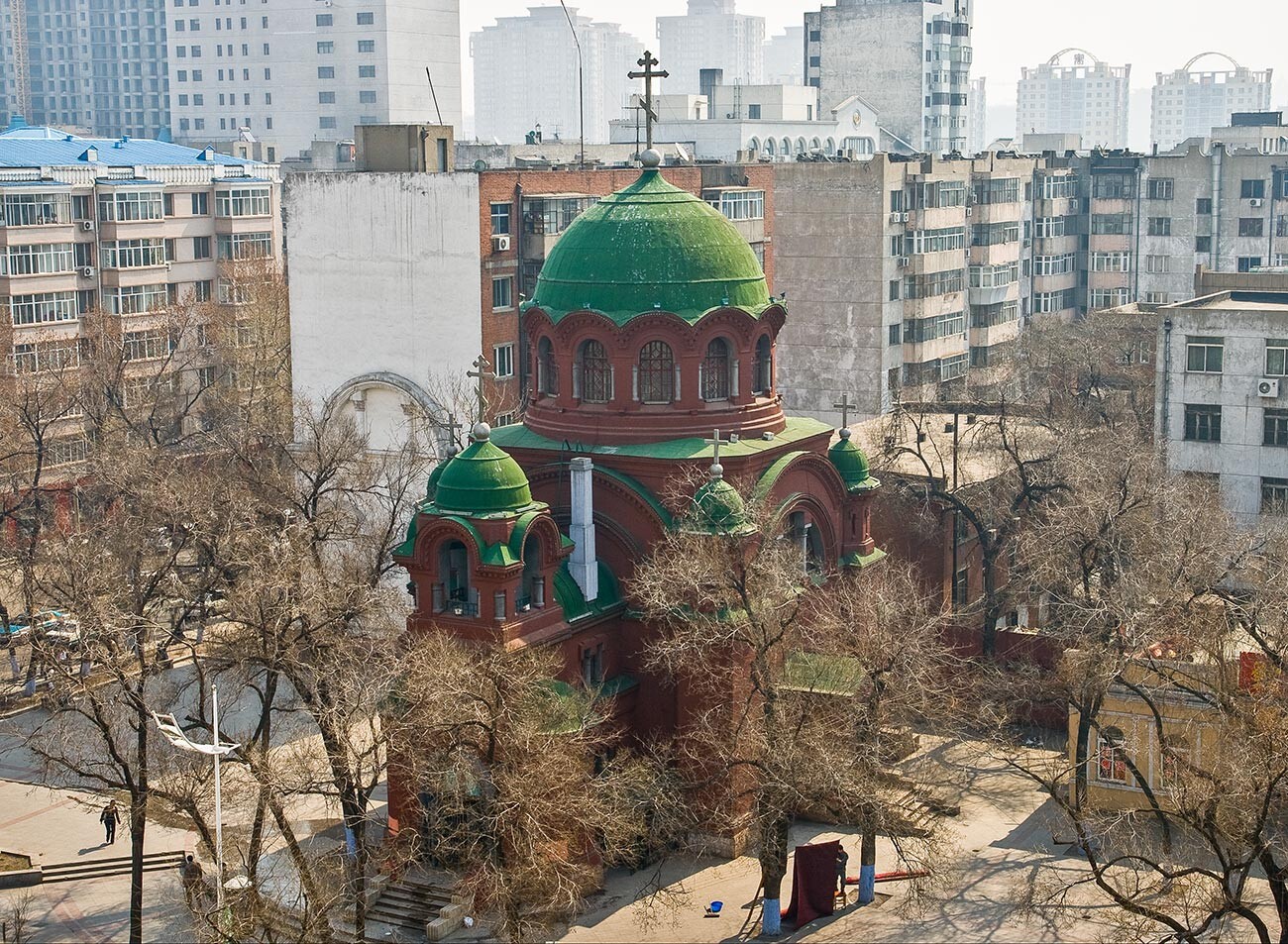
Church of the Intercession of the Theotokos in Harbin.
Beesquared (CC BY-SA 2.0)After 1965, with the beginning of the ‘Cultural Revolution’, the Hongweibians (Red Guards) launched a direct attack on Orthodoxy, its symbols and its faithful. Witness of the events, philologist Vladimir Levitsky describes the desecration of the Orthodox St. Nicholas Cathedral in Harbin as follows: “What I had to see filled my soul with horror: drums rang, crowd howls and shouts were heard, smoke was billowing... The fence of the Cathedral was filled with the Hongweibians. Some of them climbed up to the roof of the Cathedral to put red flags there, while others took our sacred things from inside and threw them into the kindled bonfires, where everything burned, gleaming in the sun. All the icons of the cathedral and the chapels were burned on the bonfires... The bells of the three churches did not cease ringing during the burning and rang for days after, tormenting the souls of the faithful – these Chinese hooligans had finally got hold of what’s been forbidden for them before and were now reveling in their triumph.”
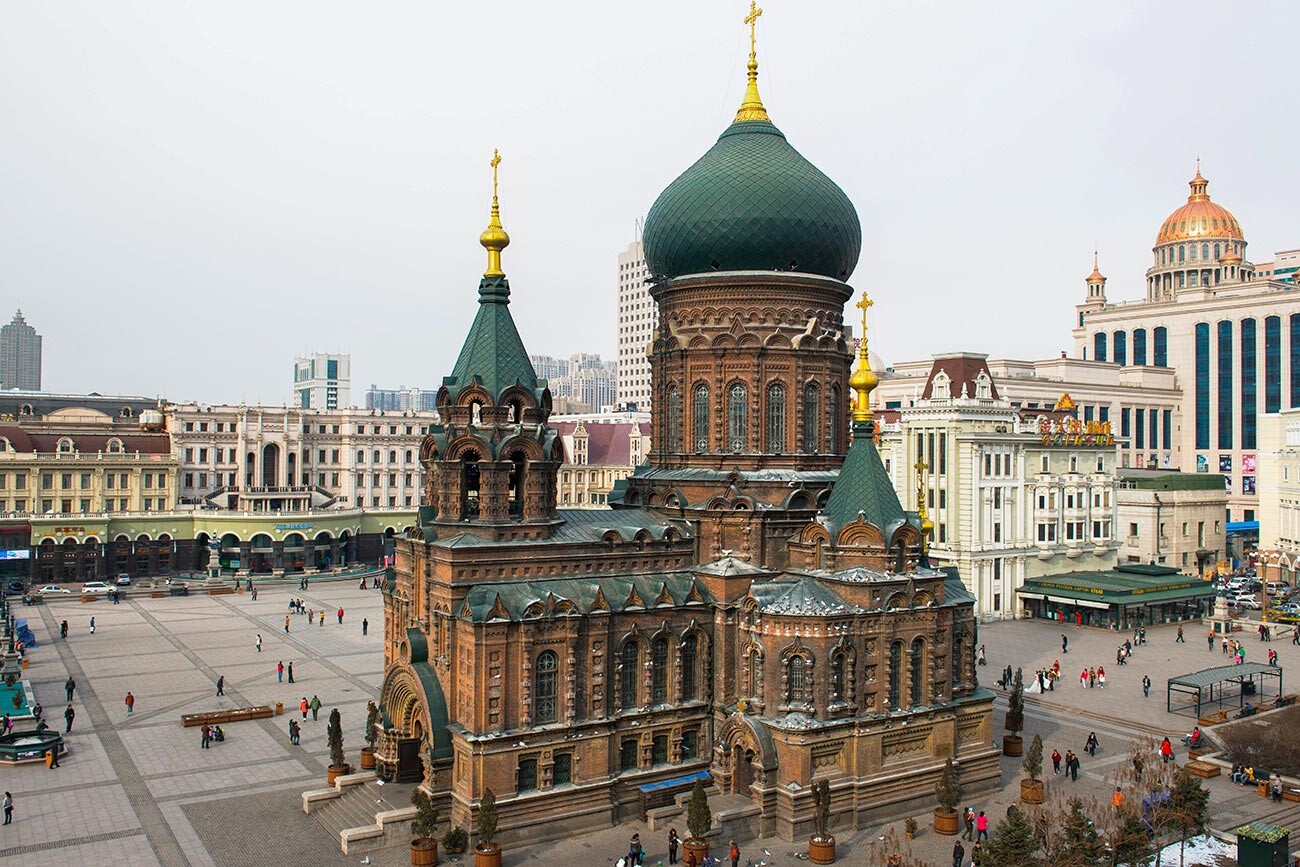
The Church of Holy Sophia, Harbin.
Legion MediaIt took many years before Orthodoxy began to recover in China. In 1984, Archpriest Grigoriy (Zhu) conducted the first liturgy in the Church of the Intercession of the Theotokos in Harbin since the events of the “cultural revolution”. Gradually a small community of Russian and Chinese Orthodox began to restore the holy temples in various cities of the Republic of China. In 1993, a delegation of the Russian Orthodox Church, headed by then Metropolitan Kirill of Smolensk and Kaliningrad, visited China. Twenty years later, in 2013, Kirill visited China again as Patriarch of Moscow and All Russia.
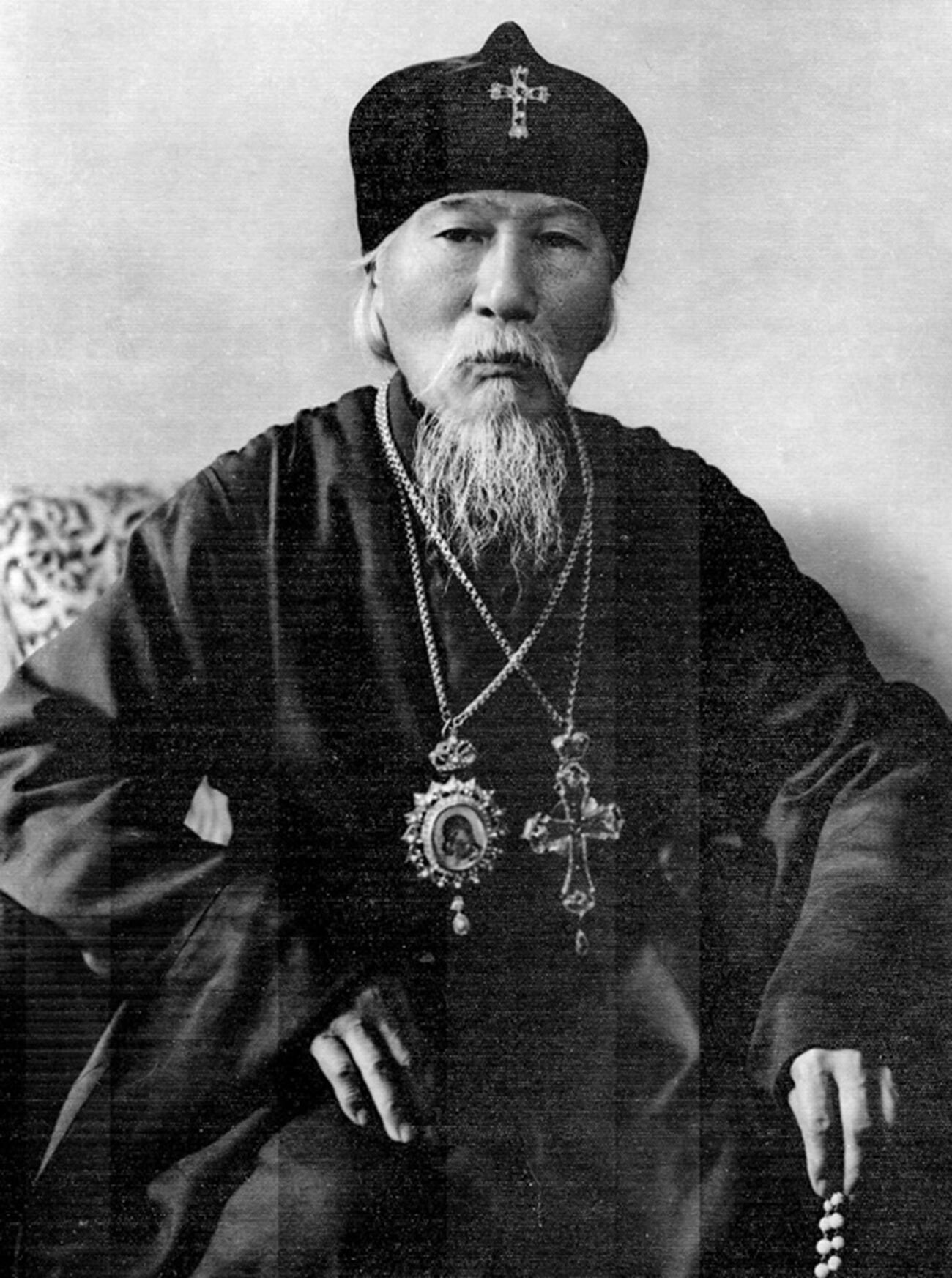
Father Vasiliy Shuan (1888-1962), Bishop of Beijing.
Public domainToday, the Patriarch is formally the temporary administrator of the Chinese Orthodox Church, but there is still no acting head of state in China. There are officially four Orthodox churches in China, the rest of the surviving ones are still closed or occupied by secular institutions. In Beijing, there are still about 400 descendants of the very Albazinians who once were the first Orthodox in China, as well as individual families of ethnic Russians and Chinese who practice Orthodoxy.
If using any of Russia Beyond's content, partly or in full, always provide an active hyperlink to the original material.
Subscribe
to our newsletter!
Get the week's best stories straight to your inbox